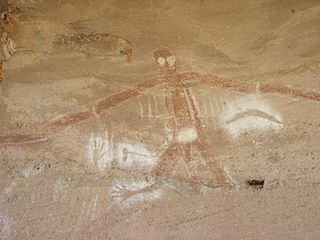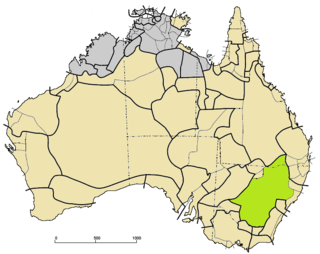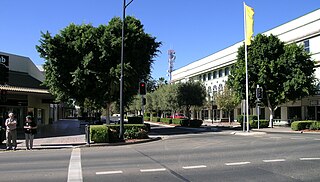Mythology and social rite of initiation
In one early report by the Reverend Greenway, the Weraerai were said to share much mythology with the Gamilaraay. Using European analogies, he described their supreme god as Baiame, creator of the murri (aboriginal people) who had an earthly regent called Turramūlan, whose name meant 'one-legged' since 'his locomotive instruments, or feet and legs, (were) in the form of an Indian yale, all on one side; hence his name, signifying 'one-legged'. His consort Muni Burribian was delegated with the task of initiating women into the domestic arts. Turramūlan's presence is summoned by the whirling of a bullroarer during the rites of initiation at a bora circle.

The Gamilaraay, also rendered Kamilaroi, are an Indigenous Australian people whose lands extended from New South Wales to southern Queensland. They form one of the four largest indigenous nations in Australia. The Kamilaroi Highway, Sydney Ferries Limited's vehicular ferry "Kamilaroi" (1901–1933), and a cultivar of Durum wheat have all been named after the Kamilaroi people.

In Australian Aboriginal mythology Baiame was the Creator God and Sky Father in the dreaming of several language groups, of Indigenous Australians of south-east Australia.

The bullroarer, rhombus, or turndun, is an ancient ritual musical instrument and a device historically used for communicating over great distances. It dates to the Paleolithic period, being found in Ukraine dating from 18,000 BC. Anthropologist Michael Boyd, a bullroarer expert, documents a number found in Europe, Asia, the Indian sub-continent, Africa, the Americas, and Australia.
Soon the leaders appeared by a long train of aborigines in single file. They were all painted in red, yellow, and white figures, the white prevailing in stripes down their arms and thighs: each was girded with a specially constructed belt or girdle of opossum known as a ghūtūr, [lower-alpha 1] and fringed around by a sort of short kilt made of split opossum, native cat, and squirrel skins respectively, according to the totem to which they belonged. Their hair was dressed in various ways and well combed and greased, then frosted over with swandown or that of other birds, each had round their head under the hair, at the sides and back, a band netted closely and broad where it passed over the forehead, this is known as a ngooloomere (from the covering the forehead) this was of a great variety of colour amongst them. Each carried in his left hand a small packet of very fine ashes or white or grey earth dust, the en closing material was of soft bark, this was struck by the right hand, thereby emitting some of the powder within, which floating in the air forms a misty cloud all over. The blows were given in solemn cadence chanted in a subdued voice by all, and added much to the real solemnity of the scene...they entered upon another prepared enclosure, in which lay an enormous representation of a serpent made of stuff mud or clay and branded across by yellow, red, and white adornments and bands...Round this figure the whole body marched in much the same style and manner as at their first entrance on the scene, but bending forward occasionally as at certain points fixed simultaneously with a sort of inclination of the body as if expressing reverence. The motions throughout were made with all the accuracy and precision of the most perfectly drilled troops or well taught dancers. When this function was completed and open space prepared there, they formed a square by regularly preserved ranks, and commenced a grand corroboree, moving in unbroken mass forward a space, then backward, then from left to right, then from right to left in one unbroken order, and with faultless precision as to time and manner, their voices and limbs.
This page is based on this
Wikipedia article Text is available under the
CC BY-SA 4.0 license; additional terms may apply.
Images, videos and audio are available under their respective licenses.

The Awabakal people, a group of indigenous people of New South Wales, are those Aboriginal Australians who identify with or are descended from the Awabakal tribe and its clans scattered along the coastal area of what is now known as the Mid North Coast region of New South Wales. Their traditional territory spread from Wollombi in the south, to the Lower Hunter River near Newcastle and Lake Macquarie in the north.

The Gamilaraay or Kamilaroi language is a Pama–Nyungan language of the Wiradhuric subgroup found mostly in south-east Australia. It was the traditional language of the Gamilaraay, but is now endangered—according to Ethnologue, there were only 35 speakers left in 2006, all mixing Gamilaraay and English. However, there are thousands of people of mixed descent in the native populations as well as in immigrant populations who identify as Gamilaraay. The Gamilaraay language is also taught in some Australian schools.
Darkinjung is an Australian Aboriginal language, the traditional language of the Darkinjung people. While no audio recordings of the language survive, several researchers have compiled wordlists and grammatical descriptions. It has been classified as a language no longer fully spoken and it can be classified as needing a language renewal program. It was spoken adjacent to Dharuk, Wiradhuri, Guringai, Gamilaraay, and Awabakal. The Darkinjung tribe occupied a small part of southeastern Australia inside what is now the New South Wales area. They likely inhabited a considerable tract of land within Hunter, Northumberland, and Cook counties.

The Djagaraga or Gudang are an Australian Aboriginal tribe, traditionally lived in the coastal area from Cape York to Fly point, including also Pabaju, in the Cape York Peninsula, Queensland. In the early period of white settlement as the Somerset tribe, after the settlement of Somerset established on their lands in 1863.
Robert Hamilton Mathews (1841–1918) was an Australian surveyor and self-taught anthropologist who studied the Aboriginal cultures of Australia, especially those of Victoria, New South Wales and southern Queensland. He was a member of the Royal Society of New South Wales and a corresponding member of the Anthropological Institute of London.

The Kangulu, also written Gangulu, is an aboriginal tribe from the Mount Morgan area in Queensland, Australia.
The Anēwan, also written Anaiwan/Anaywan, are the traditional owners of the land around Armidale and the New England tableland in New South Wales.
The Wodiwodi peoples were the Indigenous Australian people of New South Wales.
The Brabiralung were an Indigenous Australian people, one of the five tribes of Gippsland, in the state of Victoria, Australia, and belonged to a wider regional grouping known as the Kurnai.
The Ualarai, otherwise spelt Yuwaalaraay, were an indigenous Australian people of New South Wales.
The Koamu (Guwamu) were an indigenous Australian people of the state of Queensland.
The Weilwan are an indigenous Australian people of the state of New South Wales.
The Barranbinya, also written Baranbinja, were an indigenous Australian people of New South Wales.
The Marulta were an indigenous Australian people of the state of Queensland.
The Kaiabara were an indigenous Australian people of the state of Queensland. Rasther than an independent tribe, they may have been a horde of the Gubbi Gubbi.
The Kalibal (Gullibul) were an indigenous Australian people of New South Wales.
The Kawambarai (Gawambaraay) were an indigenous Australian people of the state of New South Wales. Their domain was in the central–western district of New South Wales
The Wiyabal were an indigenous Australian people of the state of New South Wales.
The Gudanji, otherwise known as the Kotandji or Ngandji, are an indigenous Australian people of the Northern Territory.












